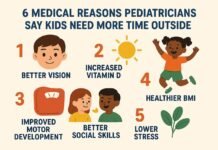Dyslexia is the most common of the neurobehavioral learning disabilities, affecting approximately 20% of Americans. Individuals afflicted by this brain-based language-processing disorder can display various signs and symptoms stemming from difficulties in identifying speech sounds and decoding them. While there is no known cure for dyslexia, early diagnosis through the Tests of Dyslexia (TOD™) and systematic intervention programs can produce positive outcomes.
What Are the Symptoms of Dyslexia?
Symptoms of dyslexia in children are generally tied to language, particularly reading, and the signs vary based on the age and stage of the child.
Preschool Age Dyslexia Symptoms
Dyslexia signs can be hard to identify before a child starts school, but some early symptoms can hint at a problem, such as:
• Difficulty in forming words, including confusion with sound-alike words and a tendency to reverse sounds
• Late learning to talk
• Slow learning new words
• Problems learning, remembering, or naming letters, numbers, and colors
• Issues with rhymes, including playing rhyming games and learning nursery rhymes
School-age Dyslexia Symptoms
Dyslexia symptoms tend to become more pronounced once the child enters school. The following may become evident:
• Reading below grade level
• Difficulty processing and understanding auditory information
• Problems choosing the right word or verbalizing answers
• Issues remembering sequences
• Difficulty completing reading or writing tasks in a timely manner
• Trouble seeing and/or hearing differences and similarities in words
• Difficulty sounding out unfamiliar words
• Trouble with spelling
• Avoidance of activities that require reading
Teen and Adult Dyslexia Symptoms
Signs of dyslexia at this age look very much like the signs in children, including:
• Reading problems
• Laborious, slow reading and writing
• Problems with learning foreign languages
• Spelling problems
• Difficulty in word retrieval
• Avoidance of activities involving reading
• Tendency to mispronounce words
• Difficulty summarizing
• Trouble completing mathematical word problems
Reading Assessments For Dyslexia
Diagnosis of dyslexia relies on more than a single test. Instead, a battery of tests are used in an evaluation to identify areas of weakness in reading and processing skills. The following tests are crucial in diagnosing dyslexia:
Tests For Phonological Awareness
These tests measure the oral language ability to identify and manipulate word sounds. Phonological awareness is a core element that dyslexia affects. When individuals struggle with this, reading problems generally follow due to difficulty matching word sounds to word letters.
Decoding/Encoding Tests
An assessment with an encoding/decoding test evaluates a student’s ability to recognize sight words and sound out unfamiliar words. The test enables the evaluator to distinguish between word recognition and phonetic analysis ability.
Rapid Naming Tests
Rapid automatized naming (RAN) is the ability to recall the names of colors, objects, numbers, letters, and sight words with fluency. Difficulty with RAN is an important predictor of a reading disability, including dyslexia.
Reading Fluency and Comprehension Tests
Dyslexia screeners typically require students to demonstrate reading fluency, which includes reading speed, accuracy, and prosody. Generally, an evaluator will listen to the student read aloud to measure reading fluency. In addition, many assessments for dyslexia include reading comprehension measurement to determine if students can interpret the meaning of the words they are reading.
Learn more at WPS about how to assist kids in achieving their goals in school by using Tests of Dyslexia (TOD™).













